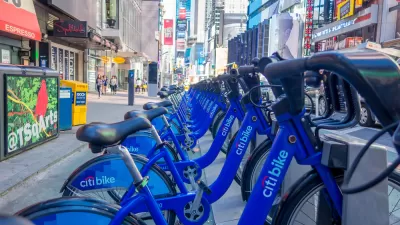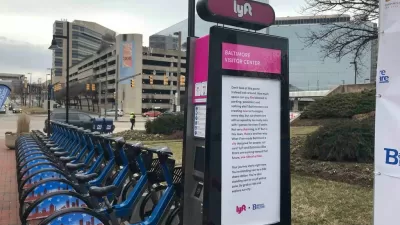As new transportation systems continue to emerge and gain popularity, the sacred cows of land use and transportation planning require radical new thinking, according to Gabe Klein.
Klein begins his argument about the need to rethink the paradigms of planning by citing the example of the disruptive possibility of bike share: "When we think about transit-oriented development, we typically think of rail stations. We know that in certain environments with density levels of X and height limits of Y, we can predict levels of investment of Z. But how would that equation hold up if Transit Oriented Development centered on a bike-share station, for instance, rather than rail stop?"
Autonomous vehicles and transportation network companies like Uber and Lyft could also disrupt traditional planning paradigms, because of their lack of a fixed node.
The evolution of the transportation system, to a larger, multi-mode, technology-enabled system will require bold action, according to Klein. "If we operate a bit fearlessly—and the public policy people work together with private industry and shape the rollout of technologies and services, as we have with bike-share in D.C. and Chicago—I think we will have a more ideal, equitable, and useful outcome for metro-area populations. The less we worry, and the more we implement these systems in different environments and at different levels of density, people will use them as they need them and show us the patterns....Then, cities can adjust offerings and move stations to fulfill constituent demand."
FULL STORY: We Need to Think Bigger About Transit-Oriented Development

Alabama: Trump Terminates Settlements for Black Communities Harmed By Raw Sewage
Trump deemed the landmark civil rights agreement “illegal DEI and environmental justice policy.”

Study: Maui’s Plan to Convert Vacation Rentals to Long-Term Housing Could Cause Nearly $1 Billion Economic Loss
The plan would reduce visitor accommodation by 25% resulting in 1,900 jobs lost.

Planetizen Federal Action Tracker
A weekly monitor of how Trump’s orders and actions are impacting planners and planning in America.

Waymo Gets Permission to Map SF’s Market Street
If allowed to operate on the traffic-restricted street, Waymo’s autonomous taxis would have a leg up over ride-hailing competitors — and counter the city’s efforts to grow bike and pedestrian on the thoroughfare.

Parklet Symposium Highlights the Success of Shared Spaces
Parklets got a boost during the Covid-19 pandemic, when the concept was translated to outdoor dining programs that offered restaurants a lifeline during the shutdown.

Federal Homelessness Agency Places Entire Staff on Leave
The U.S. Interagency Council on Homelessness is the only federal agency dedicated to preventing and ending homelessness.
Urban Design for Planners 1: Software Tools
This six-course series explores essential urban design concepts using open source software and equips planners with the tools they need to participate fully in the urban design process.
Planning for Universal Design
Learn the tools for implementing Universal Design in planning regulations.
Caltrans
Smith Gee Studio
Institute for Housing and Urban Development Studies (IHS)
City of Grandview
Harvard GSD Executive Education
Toledo-Lucas County Plan Commissions
Salt Lake City
NYU Wagner Graduate School of Public Service





























